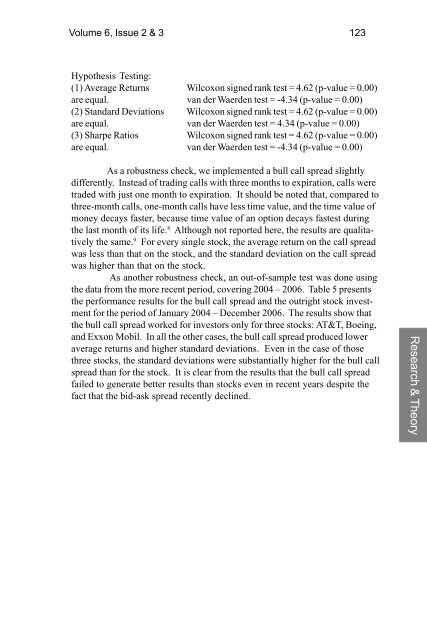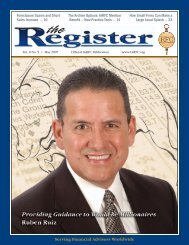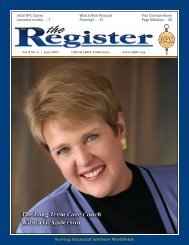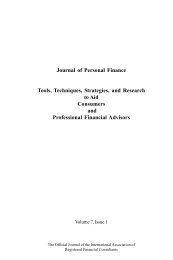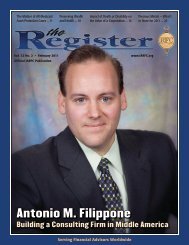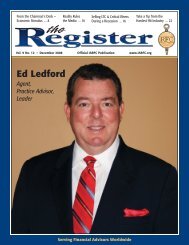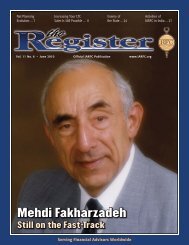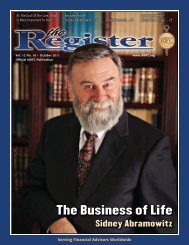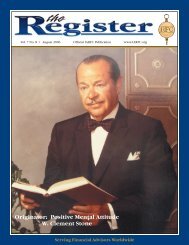3433-vol. 6 issue 2-3.pmd - iarfc
3433-vol. 6 issue 2-3.pmd - iarfc
3433-vol. 6 issue 2-3.pmd - iarfc
Create successful ePaper yourself
Turn your PDF publications into a flip-book with our unique Google optimized e-Paper software.
Volume 6, Issue 2 & 3 123<br />
Hypothesis Testing:<br />
(1) Average Returns Wilcoxon signed rank test = 4.62 (p-value = 0.00)<br />
are equal. van der Waerden test = -4.34 (p-value = 0.00)<br />
(2) Standard Deviations Wilcoxon signed rank test = 4.62 (p-value = 0.00)<br />
are equal. van der Waerden test = 4.34 (p-value = 0.00)<br />
(3) Sharpe Ratios Wilcoxon signed rank test = 4.62 (p-value = 0.00)<br />
are equal. van der Waerden test = -4.34 (p-value = 0.00)<br />
As a robustness check, we implemented a bull call spread slightly<br />
differently. Instead of trading calls with three months to expiration, calls were<br />
traded with just one month to expiration. It should be noted that, compared to<br />
three-month calls, one-month calls have less time value, and the time value of<br />
money decays faster, because time value of an option decays fastest during<br />
the last month of its life. 8 Although not reported here, the results are qualitatively<br />
the same. 9 For every single stock, the average return on the call spread<br />
was less than that on the stock, and the standard deviation on the call spread<br />
was higher than that on the stock.<br />
As another robustness check, an out-of-sample test was done using<br />
the data from the more recent period, covering 2004 – 2006. Table 5 presents<br />
the performance results for the bull call spread and the outright stock investment<br />
for the period of January 2004 – December 2006. The results show that<br />
the bull call spread worked for investors only for three stocks: AT&T, Boeing,<br />
and Exxon Mobil. In all the other cases, the bull call spread produced lower<br />
average returns and higher standard deviations. Even in the case of those<br />
three stocks, the standard deviations were substantially higher for the bull call<br />
spread than for the stock. It is clear from the results that the bull call spread<br />
failed to generate better results than stocks even in recent years despite the<br />
fact that the bid-ask spread recently declined.<br />
Research & Theory


